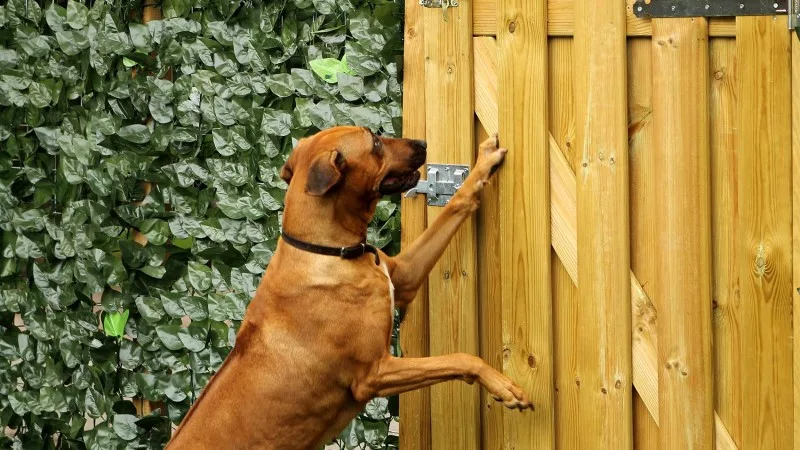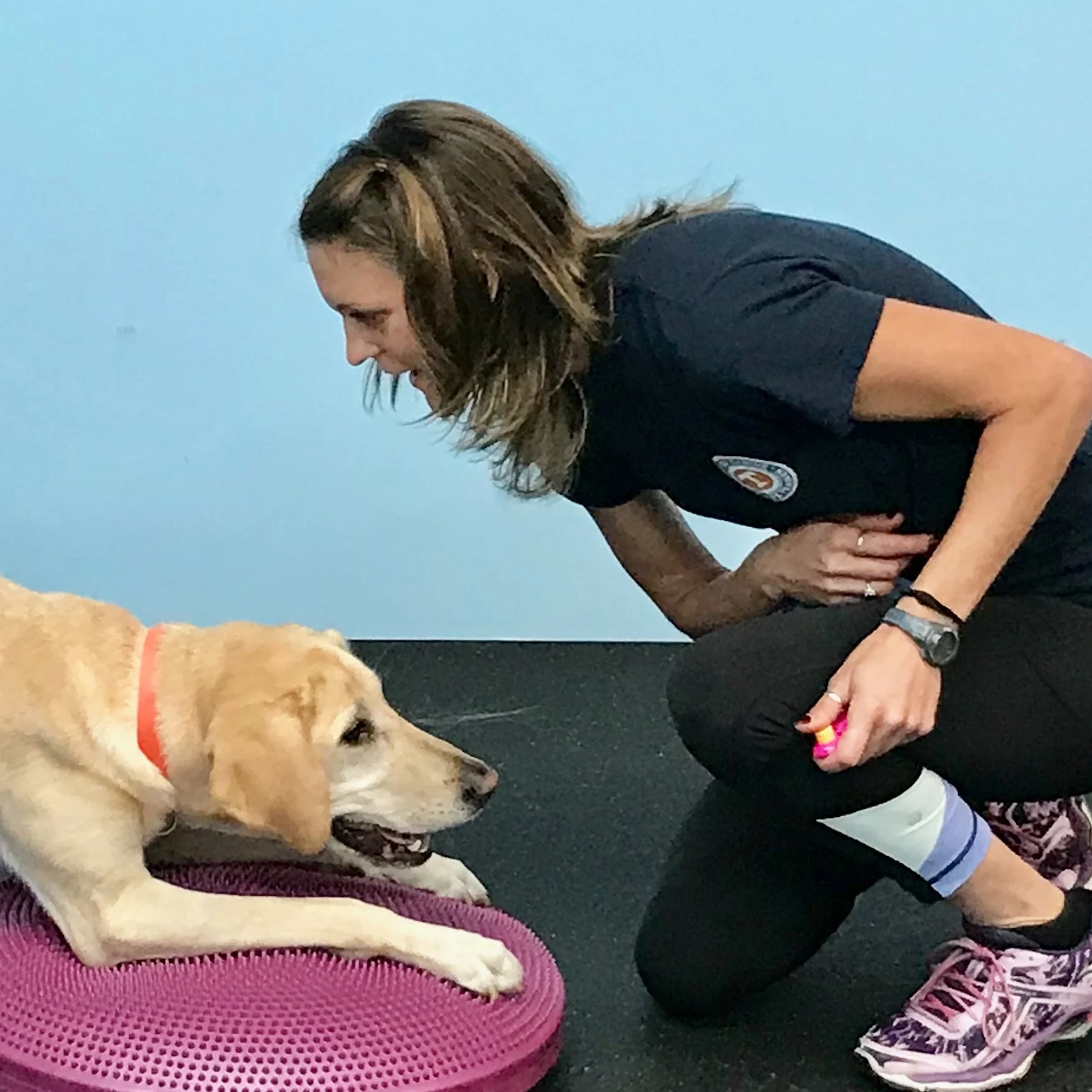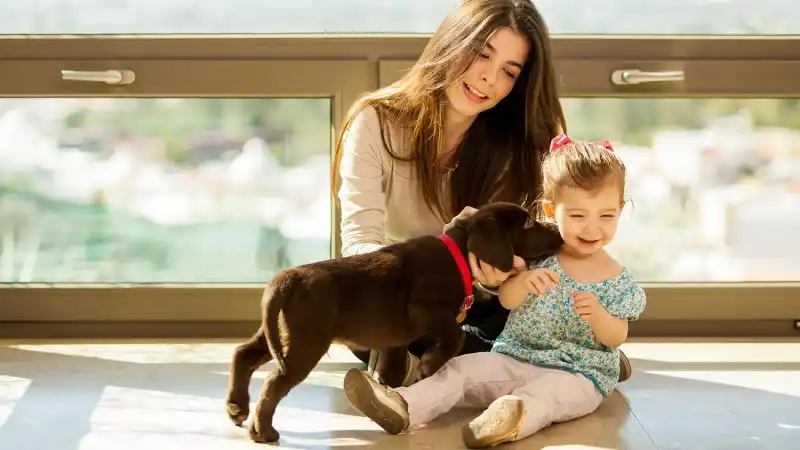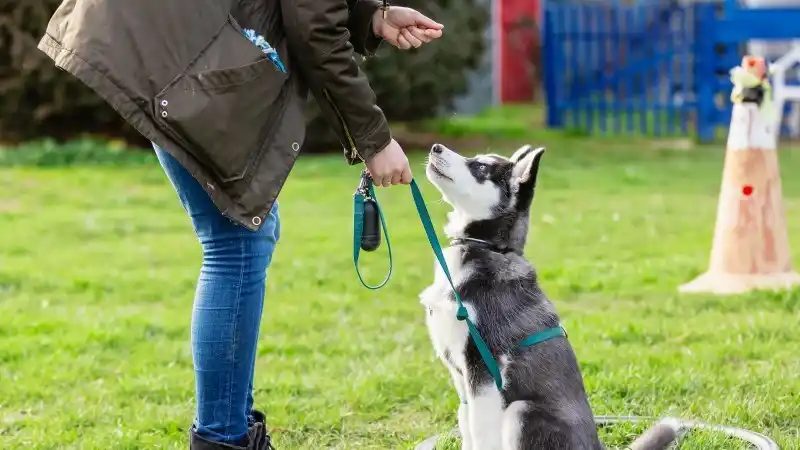Teach Your Dog Door Manners
Dogs rushing through doors can be a danger to themselves and others. Peruse this guide on best practices on how to stop your dog from running out the door.

Have you asked yourself, “How do I stop my dog from running out the door?"
Well, you’re in the right place! We’re here to help you safely and effectively learn how to stop your dog from “door darting.”
Let’s start with a few questions:
Does your dog:
Drag you through the doors of the local pet store?
Dart through the door at the vet clinic and immediately vocalize or rudely stare at another pet in the waiting area?
Bounce like popcorn in eager anticipation of a walk, which causes you to struggle to smoothly lock your door?
If that’s the case, these fretful things are easily fixable with door dashing dog training! The below method will help prevent or resolve many sticky situations. Your dog will learn to automatically pause and not go through a door until you give them a verbal cue (“Door”). They’ll also wait patiently for you to exit before darting forward for a walk or any other public activity.
Dangers of Dogs Running Out of Doors
Dogs who rush out of doors are not only at risk of hurting themselves, but could hurt someone else. If you don’t stop your dog from door darting, they could run into traffic or get lost. If someone is entering through the same doorway your dog is rushing through, they could get knocked over and potentially injured.
Part 1: Dog Door Training
1. Approach the closed door.
Have your dog on a short leash and walk toward a closed door. Your dog should remain free during this entire session, meaning that you do not cue them to do a sit, stand, or stay position. Instead, they should be free to move about and learn that it’s in their best interest to wait patiently as you open a door. Your dog’s leash should not be tight, and it should resemble a “J” shape, meaning that there is no leash pressure on your dog’s collar or harness.
2. Reach for the doorknob when your dog is relaxed.
When you reach the door, extend your treat-free and leash-free hand to the doorknob. If your dog remains still and does not try to rush through the door (even though it’s not even open yet), say “Yes” when your arm is at the most difficult location, such as when holding the doorknob. Then, remove your hand from the doorknob and return it to the side of your body. Give your dog a treat.
If touching the doorknob is too exciting, make it easier for your dog. Start by keeping your hand 6 inches away from the doorknob. Say “Yes” when you reach for the door, then return your arm to your side, and give your dog a treat. Progressively increase distance to five inches, four inches, and so on until you can touch the doorknob. Be sure to say “Yes” as your arm gets closest to the door, but only if your dog remains calm and does not try to plow through the door. Every time you say “Yes,” be sure to treat your dog after your hand returns to your side.
3. Practice opening the door while ensuring that your dog is calm.
Work up to jiggling the door handle, then progress to opening the door. When the door is open an inch and if your dog remains composed, say “Yes,” close the door, return your arm to your side, and treat your dog. Keep treats nearby in a pouch or your pocket. If you have treats in your door-opening hand, your dog will want to get closer to that pleasant smell and be unable to resist the urge to follow their nose toward the threshold. Work up to opening the door two inches, six inches, ten inches, and so on.
Your door dasher dog will learn that the door only stays open when they are calm and not trying to burst through the opened door. If they try to go through the door, gently close the door without squishing them, and do not offer a treat or walk through the door. Make the next repetition easier so that your dog is successful. This could be simply touching the doorknob or only turning the doorknob instead of opening the door.
4. Go through the door.
Progress to the point at which you can open the door approximately two feet and your dog does not attempt to dart through the entryway. Say “Yes” when the door is at its widest point, close the door, and treat your dog. Now you’re ready to actually go through the door! Open the door two feet and then say "Door" when your dog is allowed to go through ahead of you. You will likely need to indicate with your body language that they can pass through.
Your dog will learn that they never go through a door unless they wait politely and hear your verbal cue.
Part 2: Teach the Automatic Head Check
After going through a door, but before starting a walk, wait for your dog to “head check.” A head check is when a dog turns their head and looks at a person’s upper body. To get a head check, wait for your dog to look back at you.
After the first few repetitions, you could wait several minutes or seconds. Your dog will learn that no forward motion past a door occurs until they look at you. When they do look, say your verbal marker word ("Yes") to designate that they did something correctly. You may treat this behavior or use the continued walk forward as the reward.
This automatic head check ensures that your dog is focused on you instead of looking at all the other interesting things outside, whether they be squirrels, other dogs, or people. Once your pet can focus on you, you’re well on your way to putting a stop to door darting!
More Tips to Stop a Door Dashing Dog
1. Practice anytime, anywhere.
This method can be practiced in any situation if your dog is on-leash. Opening the door is the cue to your dog to remain serene and await further instruction.
You can practice a few repetitions of this in the comfort of your own home using indoor doors only – not all repetitions need to be out your front door or in public. For example, before bedtime, grab your dog’s leash, a few pieces of kibble or treats, and your pup. Then, walk to a closed inside door, such as a bathroom or a bedroom door. Practice this method to train on all types of doors.
2. Stop your dog from escaping.
This self-control around doors could prevent escape. Your dog will acclimate to not being allowed to rush through doors and realize that patience, both on and off-leash, translates to treats. You can lower the treat value over time, such as providing kibble instead of treats, and eventually transition to praise only as you wean them off food rewards.
Many methods of canine door etiquette exist. Consistency is the key for your dog, so never allow or reward door dashing or you may confuse your pup!

Every Dog and Cat Deserves the Pet Insurance of Champions
Get prize-winning care for your pets.

Jasey Day holds the Certified Canine Fitness Trainer (CCFT) credential through the University of Tennessee. She is a member of the Bobbie Lyons K9FITteam - a team of compassionate canine fitness instructors who actively teach others and continually expand their own knowledge. Since 2004, Jasey has taught a variety of workshops and classes on the following: Puppy, Canine Good Citizen/Family Pet, Advanced Family Pet, Canine Fitness, Canine Swimming, Rally, and Agility. In addition, Jasey has earned over 60 titles in Dock Diving, Agility, Rally, CGC and Trick Dog. Jasey has worked full time for the American Kennel Club since 2007 and teaches at Care First Animal Hospital in Raleigh, NC. Jasey’s Labrador Retrievers spend their free time hiking, training, and snuggling with Jasey.
READ MORE ARTICLES

